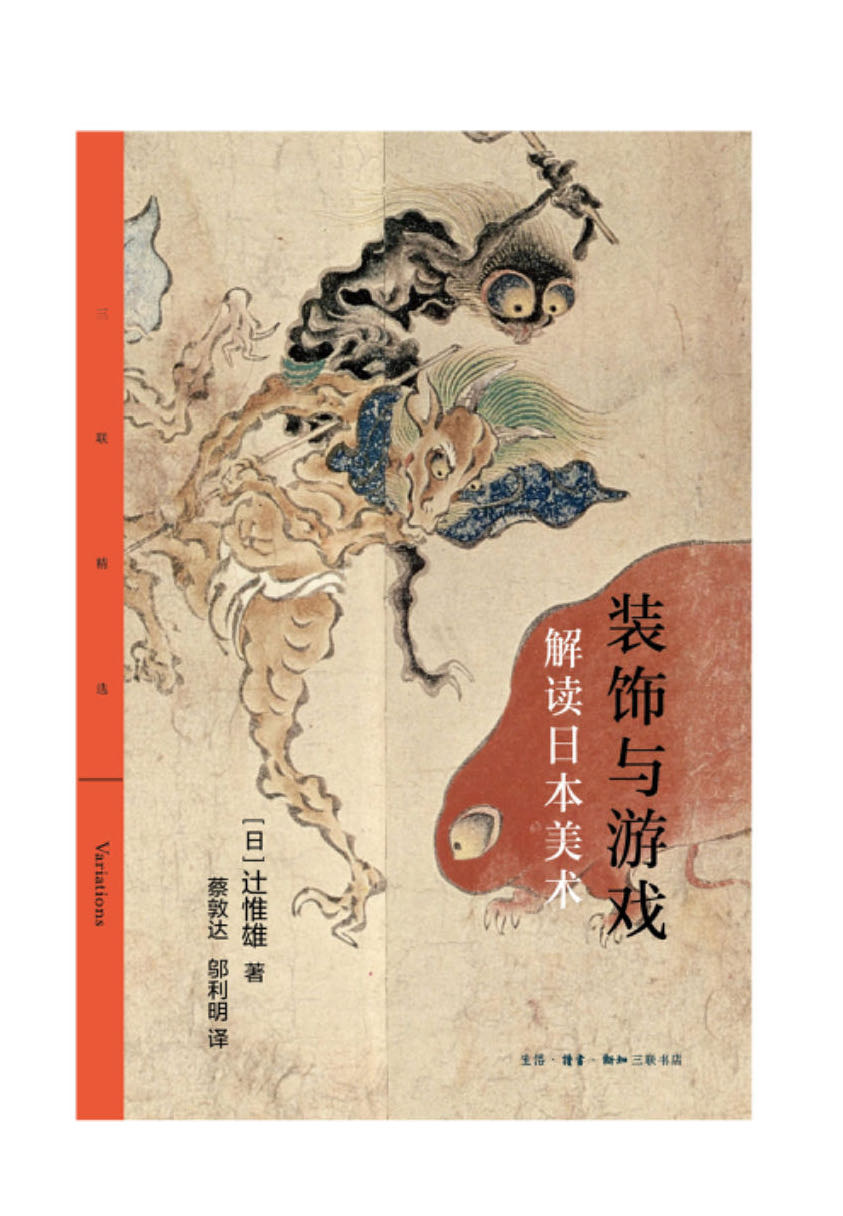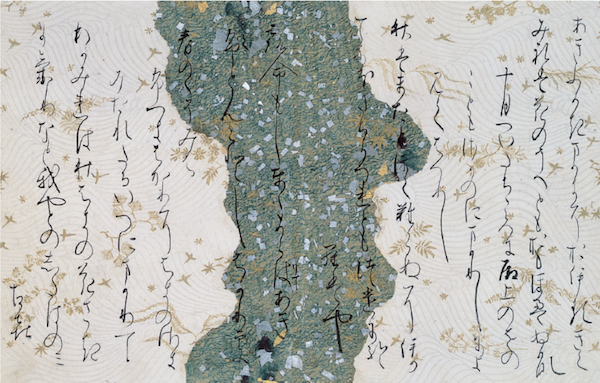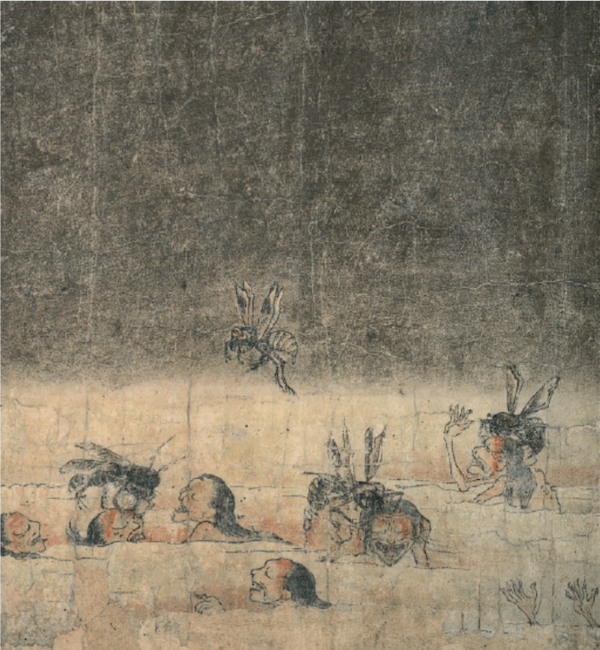
What is the essence of Japanese art? Japanese art historian Tsuji Yuio believes that the characteristics of Japanese art lie in its sensibility and interest, and the typical examples of this characteristic are decoration and games.
Recently, "Decoration and Games: Interpretation of Japanese Art" was published by Sanlian Bookstore. Through the investigation of the structure and development of Japanese art, the author pointed out that while Japanese art is constantly learning from Chinese art, it is also actively seeking "feeling" in art. "Fun", the aesthetic taste derived from it has derived many unique art forms, such as "elegance", "Bosaluo", "solemn", "Wuhu", "ink play", "analogy" and other aesthetic orientations, creating Rich and colorful Japanese art imagery.

"Decoration and Games: Interpreting Japanese Art" book and video
"Mr. Tsuji Weixiong is an expert in the history of Japanese art. Sanlian Bookstore once published his masterpiece "The History of Japanese Art in Illustrations."" Editor-in-chief Ding Lisong introduced that, unlike the previous tome, this "Japanese Art History in Illustrations" Decoration and Games: Interpreting Japanese Art is a short book written by the author more than ten years ago. The opening chapter raises a question: What is Japanese art? In the author's opinion, Japanese art has long imitated China and studied Western Europe in modern times, but it has formed its own uniqueness in this process. Art comes from aesthetics. Japanese art tradition has unique styles and techniques under the influence of the natural environment and foreign culture. The decorative nature and expressive playfulness of Japanese art form the core of this book. The author takes these two chapters as the core, cites examples from the history of Japanese art, and describes the above-mentioned characteristics of Japanese art in the form of a general history through a combination of pictures and text. Readers can follow the clear timeline and appreciate it from point to point with the author. "The pleasure of feeling" in Japanese art.
Further reading:
Ping An Art and Games - Elegance
As mentioned before, at the end of the 9th century, the system of sending envoys to the Tang Dynasty was abolished, and then Japanese-style decorative styles emerged and matured in the hands of the dynasty's nobles. The inseparable relationship between these and games can be seen through the way of viewing game paintings. Painting competition was one of the games that was popular among nobles at that time. The left and right sides took out paintings by famous masters, or albums or scrolls with poems, and competed on the completion and binding of the paintings. The nobles in luxurious clothes gathered together happily, and the venue was decorated like a beach in a garden. It was extremely elegant and could be called a veritable game of beauty. "The Tale of Genji Scroll" (Picture 1) and Nishi Honganji's version of "Thirty-six Household Collection" (Picture 2) are "beautiful pastimes" props prepared for the Heian nobles in Saiga.

Figure 1 "The Tale of Genji Scroll" (Goho Section) Goto Museum Collection 21.8×48.3cm

Figure 2 "Collection of Thirty-six Households", first half of the 12th century, Nishi Honganji Temple, 210.1×31.8cm
The paper decoration of "Thirty-Six Household Collection" is a rare and high-level work that combines "decoration" (かざり) and "game" (あそび). The combinations of dyed paper (Japanese, colored paper, colored paper) are endlessly changeable, and various decorative patterns such as folded branches, flying butterflies, birds, and red leaves floating in the void are constantly flowing. In addition, the loose script of waka (Japanese, written waka) The writing style is free and elegant, and it outlines an indescribable rhythm - the colors and shapes complement each other, creating an elegant and humorous image. Show it. All art tends towards the state of music, and I have never seen visual art that is closer to the character of music than this work. This is a world decorated by a game based on the lyrical "mono-sei"...
However, there is also a "funny" side to the feelings of the Heian nobles. When the art of the same period was combined with "burlesque", what appeared was a cheerful smile.
Heian Art and Play——"Urban Marsh" (をこ)
As mentioned before, the "fun" mentality of the Heian nobles reborn tradition.
The nobles of the dynasty began to create drama paintings around the end of the 9th century out of boredom. There is an anecdote that a woman named Gojo Mikado painted a self-portrait of herself burning with fireworks, accompanied it with a poem, and sent the painting to the man she was in love with. At the end of the 10th century, Hanayamain (968-1008, the alias of Emperor Hanayama, the 65th emperor of Japan, who reigned from 984 to 986) was a person with special talents in art. He was good at drama and painting, and his works condensed A clever expression. Among them are paintings showing the rotating spokes of an oxcart. This form of representation of rotating wheels has never been seen in China. Western paintings showing spinning wheels were only seen in Dutch paintings in the 17th century. However, rotating spokes actually appeared in the paintings of Heian nobles. This makes people wonder about the nobles of the Heian period. I am quite interested in the drama. Examples of the practical application of Hanasan-in's painting experiments can be found in 12th- and 13th-century emakimono.
"The Story of the Past" tells that in the first half of the 11th century, there was a unique monk Acharya Yoshiki who painted "comic paintings" (Japanese "をこ絵"), focusing on satirical and comic paintings, which are based on line drawings. The story of the Lord's painting. The Japanese word "武浒" (をこ) means stupid, but at the time it didn't seem to mean contempt, but rather a compliment. It is said that someone took an extended piece of paper and shamelessly asked Yiqing to draw. Yiqing slapped a small dot-like thing on the paper and stopped writing. The painter was anxious and asked him to draw more. This time Yiqing drew a figure holding a bow and archery on one end of the paper, and a target on the other end of the paper, and then drew a line between the two to represent the arrow. In flight status. The person who requested the painting looked at the painting and said angrily: "If this is the case, wouldn't it be impossible to paint other things?" It is said that Yiqing pretended to be nonchalant and ignored it.
The spirit and techniques of this kind of drama have been artistically sublimated in the scroll works that Sherman Lee classified as "realistic and ironic story styles", such as "Birds and Beasts Drama" and "Nobuki" in the 12th century. "Picture scrolls rising from the edge of the mountain", "Pictures of Banda Nayan", etc.

Figure 3 "Paintings of Birds and Beasts" (part of Volume A) from Koyama Temple in the mid-12th century, 30.4cm long
Figure 3 is Volume A of "The Painting of Birds and Animals", which is a genre painting that uses rabbits, monkeys, deer and other animals playing in the wild to represent humans. The image of animals playing happily in the stream coincides with the energetic play of children at that time. There is a song that describes the scene at that time, which is very appropriate: "Just playing, I am born in the world; Just playing, I am born in the world; Listen to the voice of the playing children, maybe this body is also moving?" [from Ping'an The last collection of ballads, "Liangchen Secret Copy", was edited by Emperor Go-Shirakawa and was written during the Jisheng period, around 1180. Japanese art adopted a "pull away" (Buddhist term, meaning "pushing away") the expression of three-dimensional space. , push back, ignore." Dogen used this word in "Shofa Eye Store"] attitude. Minamoto Toyozono once said: The European worldview is spatial, while the Japanese worldview is temporal (Minamoto, 1987). Indeed, if you look at scrolls such as "The Origin of Mount Shingui" (Figure 4), you will agree with this view. It is probably unique that the unpredictable incidents that occur in the passage of time are captured by such a vivid "game heart" and painted like this. Minglian used magic to disperse the queue of straw bags containing rice, and the straw bags gradually disappeared into the distance like a flock of wild geese. Although this kind of depiction also takes into account the depth of space, it is closely connected and closely related to the passage of time.

Figure 4 "The Picture Scroll of the Origin of Mount Xingui" (part of the first volume), toward Gosuzijie in the mid-12th century, 31.7cm in height
"The Picture Scroll of the Origin of Shinkiyama" cleverly uses the continuous moving screen to appreciate the picture scroll, allowing us to enjoy the visual stimulation like watching a movie. The expressions of the villagers in the painting are comical and exaggerated. It is said that their overly artificial postures were imitated by the Sarugaku (a vaudeville performance of acrobatics, magic and comedy, which evolved from the Sanraku spread to Japan from the Tang Dynasty in China during the Nara Period). dance moves. In the picture scroll "Banda Nagon Emoji" based on an actual political conspiracy that took place in the 9th century, the same humorous and astute descriptive attitude is used to its fullest in a more satirical way.
The same spirit of humor still exists in the prescriptive religious scrolls "Rokudo-e" [Six Paths-e: paintings that reflect scenes from hell, hungry ghosts, animals, asuras, human beings, and heaven], which boldly reveal reality of anxiety and ugliness. Let's take a look at "Hell Papyrus". In the cesspool where the dead fell, giant dung maggots with beards peered out with wide eyes, with a cannibalistic expression on their faces. In the pus pool, the "biggest bug" that looks like it came out of a monster comic bites the drowned person, and the wailing face of the deceased is as exaggerated as a cartoon (Figure 5). It goes without saying that this humorous display is intentional.

Figure 5 "Hell Papyrus: Pussy Blood Hell", collected by Nara National Museum in the late 12th century, 26.5cm in length
The following introduces a piece of historical material from the Yuanzheng era. The aristocrats of that time racked their brains to show off their eccentric hobbies, which was astonishing. Once, the three Yorimasa Minamoto were invited to visit the villa of their friend Fujiwara Norikane. They saw a waterfall painted on the wall of the friend's house. The waterfall was only half painted, but a real waterfall poured from the wall. From a distance, it gave people the impression that It was like a real waterfall falling from the sky. Yori Zheng was shocked. After returning home, he wrote a poem and gave it to Fan Jian:
The waterfall looks as real as a painting, and is unforgettable even in waking and dreaming states.
(I can’t tell whether I saw an actual waterfall or a waterfall painted on the wall. That incredible impression kept me thinking about it when I went to bed and after I got up, and I couldn’t forget it.)
This kind of "gizuna" (からくり) game was very common in Western courts, but in terms of its poetic and delicate approach to the game, Norikane's waterfall image device is unique. This anecdote also illustrates the inseparable relationship between elegance and games.
(Note: The extended reading part of this article is excerpted from Chapter 5 "Game Heart" of "Decoration and Games: Interpretation of Japanese Art")